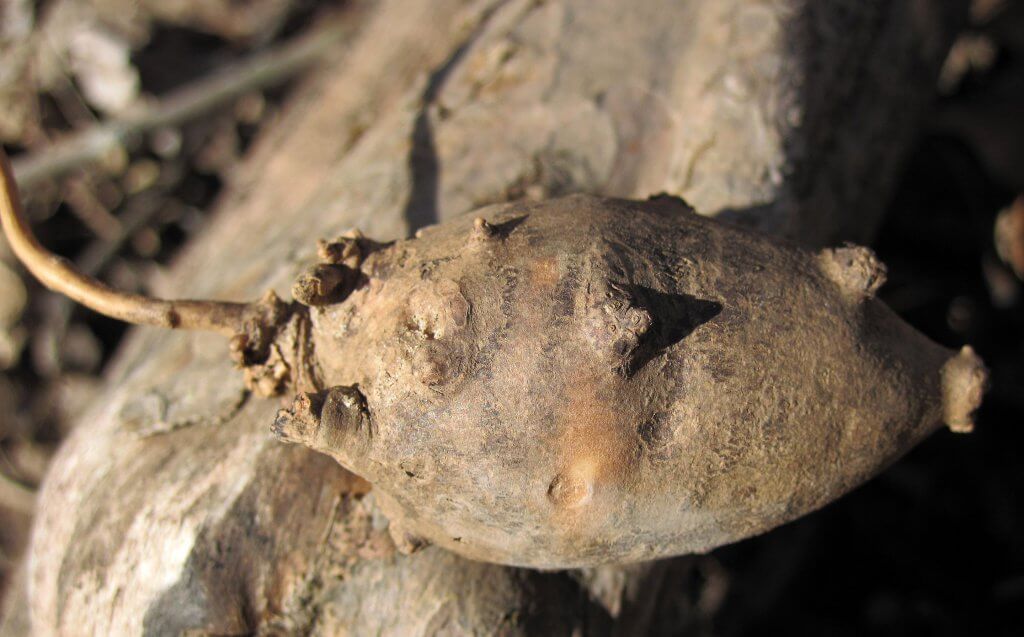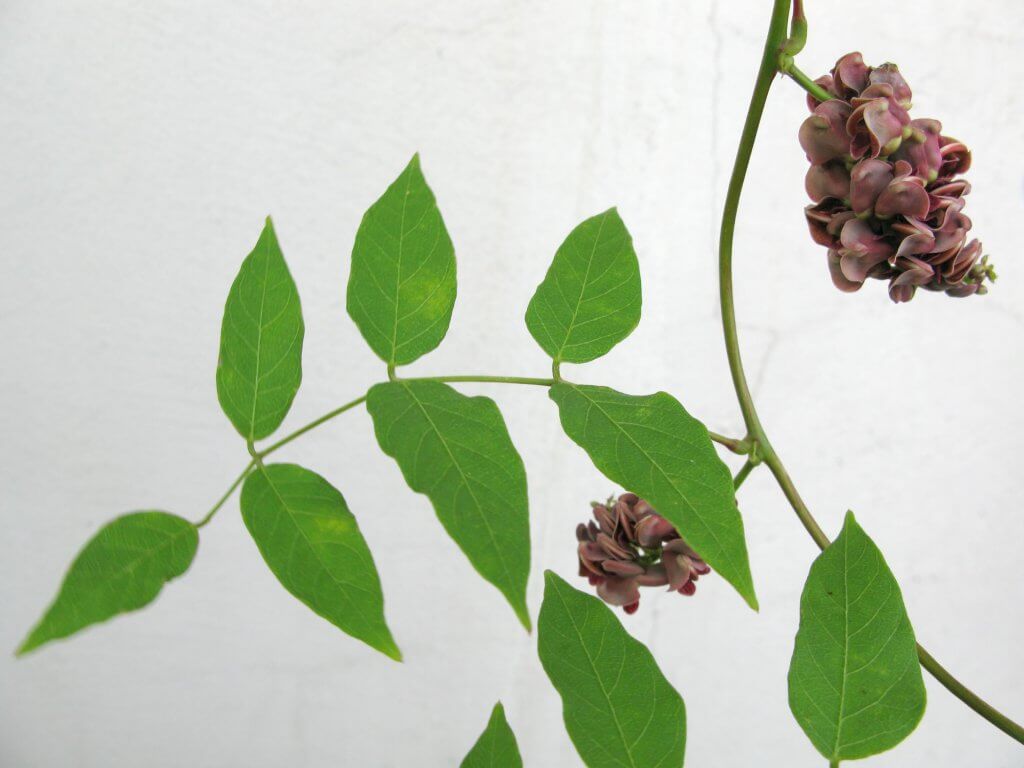Groundnut (Apios americana) is a perennial vine plant that produces edible stems, beans and tubers. You may know it by a number of other names, including potato bean or American groundnut. You’ll find them occurring naturally throughout the eastern states, from Florida to parts of Southern Canada. However you will also find them within the mid western states too, as far west as Colorado and Nebraska.
The vine can be quite extensive, reaching underground to a maximum length of 6m in some individuals. The tubers grow from this vine at small intervals, almost resembling a pearl (if not slightly misshapen) necklace. When flowering in late summer you will see warm colored petals in shades of brick red through to purple. These ornamental clusters of flowers are also edible and can be washed and eaten raw or cooked.
Although it occasionally bears the same name, this plant is not related to the peanut plant, which is often referred to as ‘groundnut’.

Edible parts and other uses
The groundnut plant produces highly nutritious tubers and beans. They have a similar taste and consistency to potatoes, but with a slightly nuttier flavoring. Studies have shown that the tubers contain a high amount of protein and calcium. They contain almost three times the amount of protein found in a potato.
The beans can be added into countless dishes as a nutritious boost, and the tubers can be used in exactly the same way as you would prepare and serve a potato. The tuber skins can be eaten if thoroughly washed, although generally it is recommended to peel them. They may also take a little extra cooking than the average potato as they are slightly more dense.
Almost all native American groups have a history of having used groundnuts within their cooking. From creating a flour to bake with, to cooking and serving the tubers with some maple syrup for a sweet dish.
Today, the majority of commercial groundnut production is located in Japan where it is viewed as highly nutritious. It was likely introduced by American traders and settlers in the 19th century.

Foraging
Groundnut tends to grow in areas of high moisture, like the edges of streams, and low woodlands. So you should concentrate on these areas when looking for local populations.
The flowers can be foraged during summer, with the beans appearing during the fall. The most nutritious part of the plant worth harvesting is generally the tubers. These can be collected at any stage of the year. Once you have located the leafed stems, follow the vine down to the soil and begin gently unearthing with a shovel.
As with all wild crops, be sure to leave some tubers behind, to allow the plant to regrow for an unlimited supply. The tubers can take up to 2 years to reach a good size (about the size of a walnut), so patience and knowledge of a few good local spots is key for a good foraging supply.

Cautions
The groundnut tubers should not be consumed raw. Not only are they unpalatable, but they also contain chemicals known as protease inhibitors. These chemicals can actually inhibit your body from absorbing nutrients. These are only broken down during cooking, so be sure to cook them through before serving.
When foraging be sure to correctly identify the plant before harvesting. Once you unearth the roots and vine of a groundnut plant the tubers should be instantly recognisable. Poison ivy can often be found growing in similar habitats so take care when foraging!
Did you know…
Interest in the groundnut plant is growing. Many foragers have chosen to try their hand at growing the plant at home With some local farmers and producers offering their bounty at farmers markets. Universities have also conducted studies and experiments to try and increase the yield and size of tubers on groundnut plants. In the near future American groundnut might be more of a household name as many begin to realise its potential.
Conclusion
Highly nutritious and easy to substitute into many recipes, groundnuts are an excellent food source to forage. Slice them into round discs and bake with olive oil and pepper for some delicious home baked crisps. Or dry them out and blend to create your own potato flour substitute. Like a potato, the tubers are extremely versatile in the kitchen!
—————Written by Hannah Sweet
Hannah is a freelance writer and graphic designer from the UK. With a penchant for travelling, photography and all things botanical, she enjoys writing about a wealth of topics and issues, from conservation and slow living, to design and travel. Learn more about her writing and design services at www.sweetmeanders.co
Many of our readers find that subscribing to Eat The Planet is the best way to make sure they don't miss any of our valuable information about wild edibles.
See our privacy policy for more information about ads on this site






